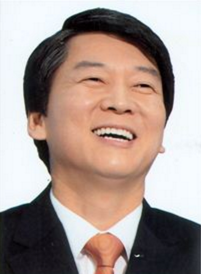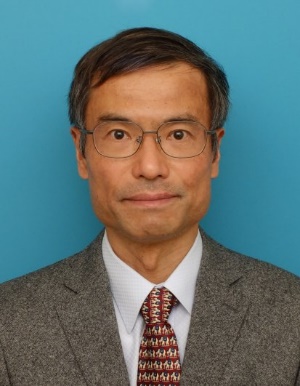
|
The 11th International Conference on Broad-Band Wireless Computing, Communication and Applications |
BWCCA-2016November 5-7, 2016, Soonchunhyang (SCH) University, Asan, Korea |
|---|---|
|
In conjunction with the 3PGCIC-2016 International Conference. |
|
Keynote Talk
Keynote Speaker I

Mr. Cheolsoo Ahn, Member of Korean Congress, Korea
Biography
Cheolsoo Ahn (born on February 26, 1962) is a South Korean politician, businessman, medical doctor and software entrepreneur currently serving as a member of the National Assembly and co-founder of People’s Party. He was previously co-chairman of the New Politics Alliance for Democracy from March to July 2014. Ahn founded AhnLab, Inc., an antivirus software company, in 1995. He was chairman of the board and Chief Learning Officer of AhnLab until September 2012, and remains the company's largest stakeholder. He also served as dean of the Graduate School of Convergence Science and Technology at Seoul National University until September 2012.
Title: Issues of IoT Security and the Revolution of Future Science Technology
Abstract
Led by the self driving car, cell phones, refrigerators, robots, and almost every electronic products are expected to be connected via the Internet of Things (IoT) in the near future. While humans possess comfort via these technology, this can also bring serious threat to IoT security resulting a thorough preparation against any threat such as hacking. In addition, the fourth industrial revolution based on the scientific and technological development will soon rapidly eliminate the human work force. Many rapid changes will come in the near future. In this talk, I will propose some solutions for the future information technology in Korea
Keynote Speaker II

Prof. Nobuo Funabiki, Okayama University, Japan
Biography
Nobuo Funabiki received the B.S. and Ph.D. degrees in mathematical engineering and information physics from the University of Tokyo, Japan, in 1984 and 1993, respectively. He received the M.S. degree in electrical engineering from Case Western Reserve University, USA, in 1991. From 1984 to 1994, he was with the System Engineering Division, Sumitomo Metal Industries, Ltd., Japan. In 1994, he joined the Department of Information and Computer Sciences at Osaka University, Japan, as an assistant professor, and became an associate professor in 1995. He stayed at University of California, Santa Barbara, in 2000-2001, as a visiting researcher. In 2001, he moved to the Department of Communication Network Engineering (currently, Electrical and Communication Engineering) at Okayama University as a professor. He is the chairman at IEEE Hiroshima Section from 2015. His research interests include computer networks, optimization algorithms, educational technology, and Web technology.
Title: Java Programming Learning Assistant System: JPLAS
Abstract
As a useful and practical object-oriented programming language, Java has been used in many practical systems including enterprise servers, smart phones, and embedded systems, due to its high safety and portability. Then, a lot of educational institutes have offered Java programming courses to foster Java engineers. We have proposed and implemented a Web-based Java Programming Learning Assistant System called JPLAS, to assist such Java programming educations. JPLAS supports three types of problems that have different difficulties to cover a variety of students: 1) element fill-in-blank problem, 2) statement fill-in-blank problem, and 3) code writing problem. For 1), we have proposed a graph-theory based algorithm to automatically generate element fill-in-blank problems that have unique correct answers. For 2) and 3), we have adopted the test-driven development (TDD) method so that the answer codes from students can be automatically verified using test codes for their self-studies. In this talk, we introduce outlines of JPLAS and its application results to the Java programming course in our department. Besides, we introduce some new features of JPLAS including the offline answering function and the coding rule learning function.